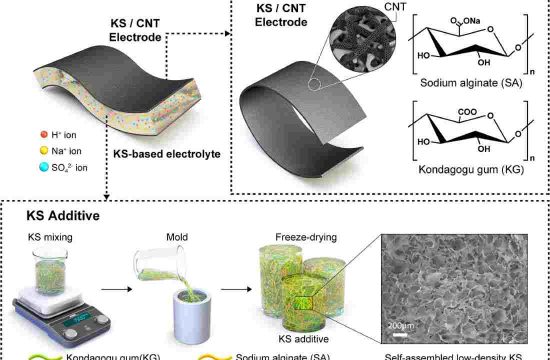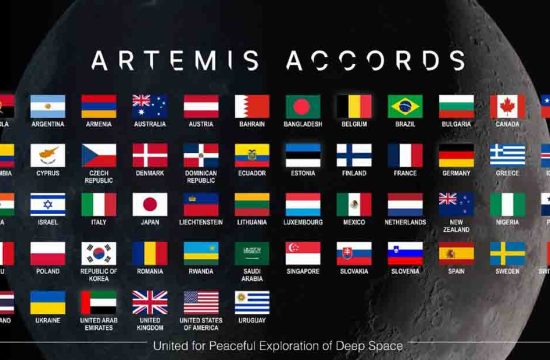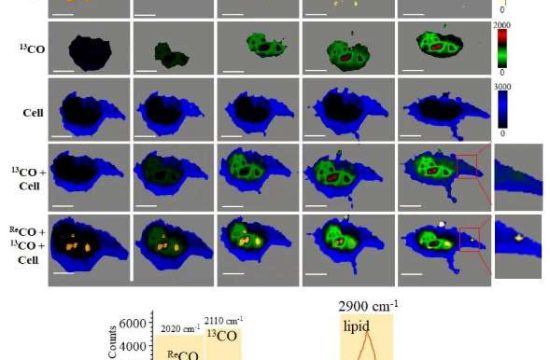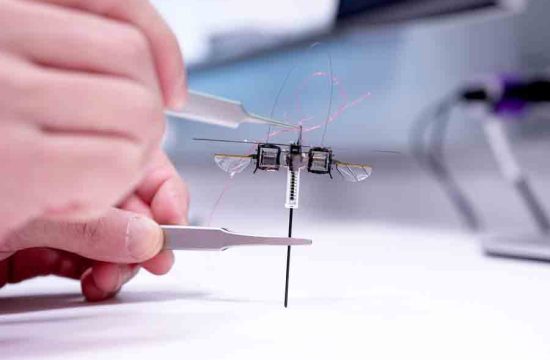Most stars form in molecular clusters, with specific environmental conditions dictating how planetary systems develop. Nearby massive stars can also be influenced by intense ionizing radiation, which can create a shell of ionized gas around a protoplanetary disk, and emit unique hydrogen recombination spectral lines.
A scientific team led by Ryan Boyden at the University of Virginia has used archive Atacama Large Millimeter/submillimeter Array (ALMA) data to identify for the first time the characteristic radio recombination lines associated with ionized shells surrounding solar system-sized protoplanetary disks in the Orion Nebula Cluster, at 1000 light-years from us.
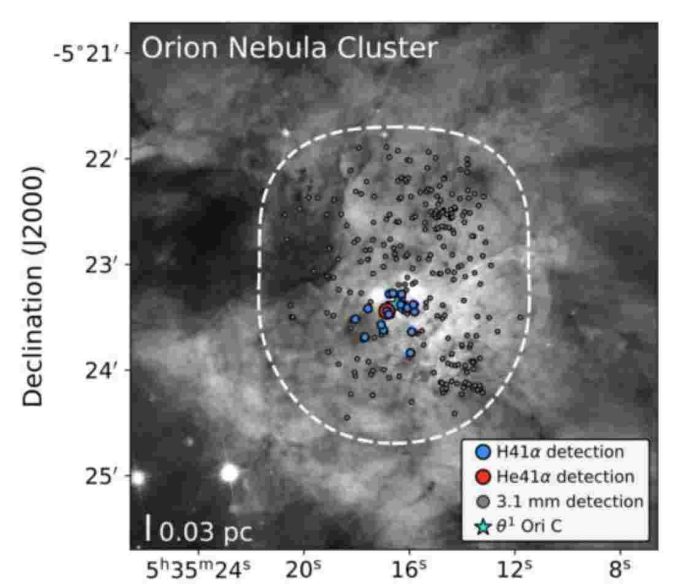
ALMA has long been used to identify recombination lines from large astrophysical objects and to study various features of protoplanetary disks.
Now, this research has proven ALMA’s interferometers are powerful enough to detect the specific radio-wavelength hydrogen recombination lines of individual ionized protoplanetary disks (proplyds), even in dense stellar clusters.
Boyden says, “This discovery was serendipitous, and sometimes those are the most exciting science projects to work on—coming across a new finding somewhat by accident.”
Whereas a protoplanetary disk is defined as the disk of dust and gas around a young star, a proplyd carries the added distinction that the disk is being ionized by intense radiation from nearby, external massive stars.
Thus, a cocoon-like shell of ionized gas surrounds the system beyond the disk. The energetic boundary of this shell appears like a comet, as the neighboring star drives photoevaporation across the disk, signaling to astronomers that these proplyd disks evolve quite differently.
Boyden and his team used data from prior ALMA observations to probe the ionized gas surrounding 200 protoplanetary disks of stars in the Orion Nebula Cluster. Of these, 17 proplyds were uniquely identified by a particular hydrogen recombination line.
Although ionized hydrogen is common in energetic environments such as these star-forming regions, Boyden and his team searched for the specific energy signature released when a free electron combines with a hydrogen ion and “falls” from hydrogen’s 42nd energy level to its 41st. That fall, called the H41α recombination line, is distinctly recognizable within the 3.1-mm radio wavelengths observed by ALMA.
“Lines at longer or shorter wavelengths will each tell us something different about the ionized gas shell,” Boyden explains. “H41α is the line that we are fortunate to already have in our observations. It’s the sweet spot of accurately telling us the temperature and density of the ionized gas and also being a lucky match to ALMA’s sensitivity.
ALMA is the most powerful array of radio telescopes in the world, at the best angular resolution, and it’s uniquely sensitive at these wavelengths to find the H41α lines. That’s what ALMA is good at doing, and doing it efficiently,” Boyden says.
Embedded within this spectral line data, the scientific team used the hydrogen recombination line flux to calculate an average temperature of 6000–10,000 K across the shells. “They’re quite warm. And this is now one of our most accurate temperature measurements for that ionized gas,” Boyden says.
In addition, the spectral line width reveals a trove of kinematic information about the disk, as the spread can indicate Doppler effect motions pushing the light to longer or shorter wavelengths. Finally, Boyden adds, “We studied the width of those recombination lines to ask, ‘What is causing that spread?’ Is it just the gases randomly shaking around, or is some more ordered flow associated with photoevaporation from these stars shaping the disk’s evolution? We think it’s the latter.”
In addition to the H41α recombination lines, Boyden and his team also identified intriguing He41α lines, indicating a potential difference from the expected abundance of helium in the region. Boyden acknowledges that adjacent carbon emissions may contaminate these helium lines, and he speculates on the next steps in the technological development of radio telescope interferometry.
“With the upgrades coming to ALMA and ngVLA in the future, they will be able to excel at longer wavelengths for even more radio recombination lines. This project is a stepping stone for future work.”



